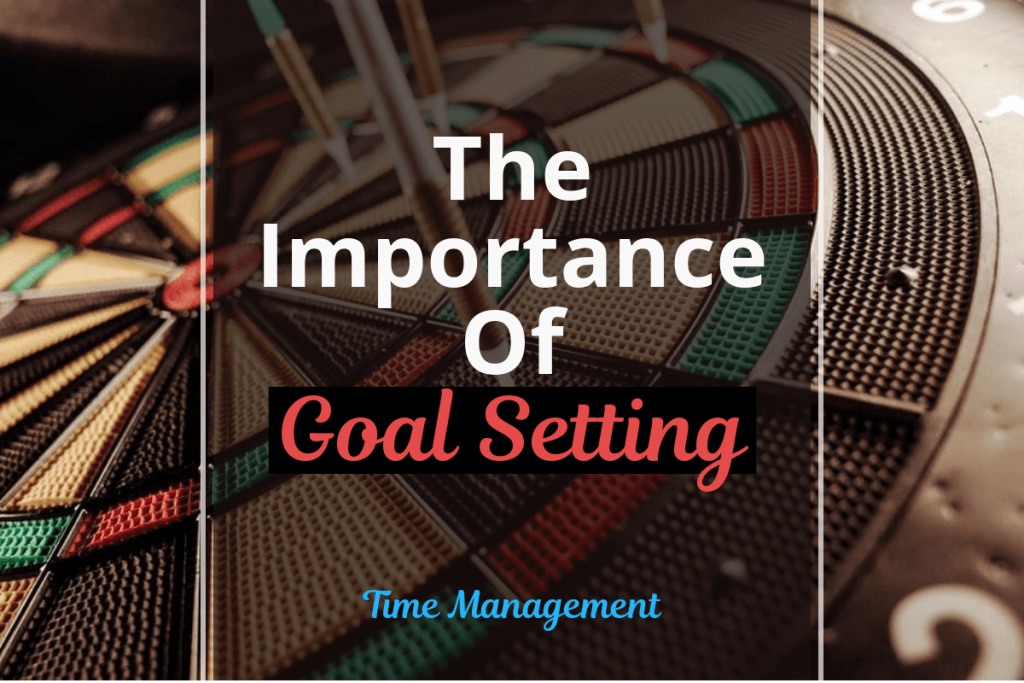🖊 This article was last updated on November 25, 2022
How many times have you worked really hard to achieve something and yet, you’ve failed? This may come up as a surprise, but a staggering 92 percent of people don’t achieve their goals.
What separates the other eight percent from the rest? Do they have any special skills or just pure luck? Maybe. Or maybe not. Sometimes, it all comes down to goal setting.
Setting and attaining goals is an important step in achieving success as an entrepreneur. However, just because you have clear objectives in mind doesn’t mean you’ll accomplish them. The key is to set GROWTH goals and plan each step of the process.
Why Goal Setting Matters
Any success story begins with a goal. However, just having a goal is not enough to succeed. You also need a plan to make it happen. Furthermore, it’s easy to create goals that set you up for failure instead of success.

Studies indicate that setting specific and challenging goals leads to higher performance 90 percent of the time than “do your best” goals, easy goals, or no goals at all. Having a clear objective keeps you focused and motivated.
The simple process of setting goals forces you to step outside of your comfort zone and work smarter. Even if you fail to accomplish a goal, you’ll learn new things along the way. This will increase your chances of success the next time you start a business.
Let’s say you begin to launch an online store offering high-end gadgets. A month goes by, then two, then a whole year – and yet, nothing happens. No sales, no phone calls, and no emails from clients. Perhaps you’re targeting the wrong audience? Maybe your products aren’t in high-demand right now? Or you’re competing against industry giants with an established reputation?
Eventually, your business fails. However, it’s not the end of the world. Instead of blaming yourself and feeling sorry, focus on what you learned from this experience.

Be objective and assess your mistakes. What have you done well and what went wrong? The next time you try something new, use a different approach. Failure can teach you valuable lessons and bring you closer to your goals.
The conventional wisdom is that you should set SMART goals. And while SMART goals are better than just picking an arbitrary goal willy-nilly, they are very out-dated. SMART goals were implemented for the first time in 1981, that’s over 35 years ago! In the decades since SMART goals were first defined, research, science, and especially neuroscience has made massive leaps and discovered lots of new or updated information in regards to productivity and time management.
That’s why I recommend setting GROWTH goals instead. I’ll go into more detail later in this article, but for now, let’s just say this acronym stands for:
- Grand Vision
- Retrospective
- Objective
- Why
- Triplet
- How
5 reasons Why Entrepreneurs fail at goal-achieving
Basically, goal setting is planning your steps to a successful outcome. You set a target, develop a plan, and make it happen. Yet, most people fail to do these things. The 5 most common reasons why entrepreneurs never achieve their goals include:
- Underestimating the difficulty of the goal
- Juggling too many goals at once
- Not having a clear plan for execution
- Poor timing
- Lack of clearly defined objectives
No matter how big or small your goals are, planning is essential. Ideally, you should break bigger goals into smaller objectives that can be easily accomplished. Big goals can help you perform better and feel more confident. A smaller goal will keep you motivated and bring you closer to success. Both are equally important.
How to Set GROWTH Goals
As I mentioned earlier in this article, GROWTH goals are an acronym for:
- Grand Vision
- Retrospective
- Objective
- Why
- Triplet
- How
Let’s go over each of these 5 important aspects briefly

Grand Vision
When setting goals, it’s important to think long-term; otherwise, you’ll miss the big picture and get stuck in details. Less than half of people who set resolutions make it past six months. Only 64 percent make it past one month. That’s why you need to develop a long-term perspective and plan things accordingly.
Make sure you believe in your goals. Create strong-enough reasons so you stay motivated along the way. Your goals should be relevant and meaningful; if you don’t really care about them, you’ll give up sooner or later.
Retrospective
A retrospective is a term that’s an important part in agile software development, but it applies very well to goal-setting too. It’s a moment of reflection at the end of an iteration to look back on what went successful, what got done, what could be improved, and how these successes and improvements can be incorporated into the next iterations. I’m sure you can see how powerful it can be to take time once in a while (I recommend every 2 weeks) to reflect on your progress.
Manage, track, and adjust your goals. Beware that things may not go as you planned. Be flexible and ready to make changes whenever necessary.
Objective
Surprisingly, many people don’t have clear goals in the first place. They hope to become successful or to climb up the career ladder but lack a well-defined objective.
Just saying “I want to build a lucrative business” is not enough. You need to be very specific about it. Think of what kind of business you want, how much profit you will make, and who your target audience is. Also, set a deadline for reaching your goals.
For instance, you could say “I will make $20,000 in the first year and increase sales by 200 percent in the second year.” Write everything down and come up with a plan. Be realistic about how much time and money you can invest in your new business or project. In general, the bigger your goal, the longer it will take to accomplish and the more expensive it will get.

Why
This ties back a to the first aspect of GROWTH goals, Grand Vision, but makes it more explicit. While you should not pursue any goals that don’t fit into your grand vision into the first place, it’s important to make “your why” part of your written goal. Inevitably, things will get tough and go different than you planned. By making your why a part of your goals, it’s easier to look past that hardship and motivate yourself to keep going after your dreams.
If the why is big enough, the how is usually not a problem Click To TweetSo instead of writing “I will make $20,000 in the first year and increase sales by up 200 percent in the second year.”, your goal becomes: “I will make $20,000 in the first year and increase sales by 200 percent in the second year, so I can quit my current day job and pursue my passions.“ Do you see how powerful this is?
Triplet
This is a big one. I already touched on this briefly in my “behind the scenes” article of how I grew my Twitter account from 133 to 1117 followers in 44 days, but nowadays I always set my goals in Triplets. This trick is so easy but powerful, that it will amaze you the first time you use it (I was mind-blown myself!).
The idea behind it is that instead of one goal, you break it up into three goals.
- The first one is the realistic, or attainable goal. (that’s the (only) one you would have set with the old SMART goal setting). It’s the goal that you are 70-80% confident about you will be able to reach, but there’s still some degree of uncertainty in your plan.
- The second goal is the stretch goal. You think there’s a 50-50 chance you’ll be able to reach it. You don’t know how yet but you’re convinced you’ll be able to figure it out in time. You’ll definitely have to come out of your comfort zone for a bit to achieve it.
- The third goal is the champagne goal. You give yourself only a 20-30% chance of achieving this goal. The goal is so big that IF you would reach it, that would definitely be a reason to celebrate with a bottle of champagne. An alternative term for this is a Big Hairy Audacious Goal (BHAG).
Setting goal triplets is genius:
- You don’t feel overwhelmed by your attainable goal and have less fear of failure, so you are less likely to procrastinate on the actions that move you closer to your goal.
- If you hit your first target early, there’s still room for improvement (your stretch and champagne goals).
- If you don’t hit your stretch goal, you don’t feel like a total failure because at least you’ve reached your attainable goal

How would our goal look like now? Just add the triplet instead of the single goal: “I will make $12,000 / $20,000 / $40,000 in the first year and increase sales by 100% / 150% / 250% in the second year, so I can quit my current day job and pursue my passions.”
Goals are meant to get you excited to start, triplets will help you with that. You can thank me later 😉
How
The last aspect of goal setting is the how. It’s not enough to set goals by picking a number and writing it down. You also need to add how you plan to achieve it in a high-level way. This is important to help you to do the right things, instead of doing some things right.
Ask yourself the following questions:
- What steps do I need to take to achieve my goals and by when?
- What resources are necessary?
- Who is involved?
- Why is this goal important?
- What challenges can I expect along the way?
- What can I do today to accomplish my goals?
- What can I do 10 weeks from now on?
- What can I do 10 months from now on?
For instance, if you’re planning to build a successful affiliate marketing business, you’ll need time and patience. Decide what goods or services you want to promote, how you’re going to do it, and how much you can expect to earn from one month or year to the next.
Think about what you can do right now to set up your business for success. You could create a website and list your products, sign up for affiliate programs, or take an affiliate marketing course. Also, think about what you’re going to do 10 months later when your website is up and running. Each of these steps will increase your probability of achieving a positive outcome.
Brainstorm on this for a little while and then decide on the 20% of tasks that will give you the 80% of results (according to the Pareto principle) and summarize this in one short sentence.

At the end of this exercise, this is how our GROWTH goal looks like:
“I will make $12,000 / $20,000 / $40,000 in the first year and increase sales by 100% / 150% / 250% in the second year, by taking an affiliate course and doing content marketing, so I can quit my current day job and pursue my passions.”
If you read this article all the way to the end, I assume you have an interest in goal-setting. If that’s the case, subscribe to my newsletter below. I’m working on more goal-setting (and more importantly goal-achieving!) material that I will only share privately with my subscribers and not on this site. Don’t procrastinate on this and subscribe now 😉
What’s a goal you’re going to set for your business? Share it in the comments below.
- These Black Friday deals will skyrocket your productivity (2021 edition) - November 11, 2021
- How to Stay Productive as a Digital Nomad - December 23, 2019
- When is the right time to outsource? - December 3, 2019

